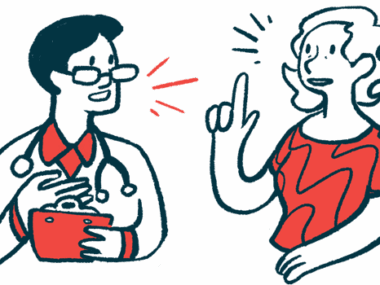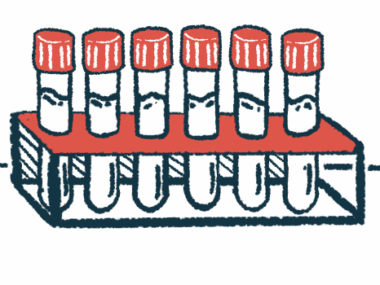Rituximab treatment superior at 1 year for severe AAV relapse: Study
Therapy worked better than traditional medications in achieving remission
Written by |

Nearly one year of treatment with rituximab was superior to traditional immunosuppressive medications at helping people with ANCA-associated vasculitis (AAV) achieve remission after a severe relapse, an analysis of data from a multicenter study in Japan has found.
Such superiority was not observed at six months of treatment, the researchers noted, but the approved AAV therapy was also associated with a trend toward fewer infections among patients. That suggests that rituximab “has the potential to sustain long-term remission with fewer occurrences of infections in the treatment of severely relapsed AAV,” the team wrote.
Noting that studies assessing the effects of rituximab treatment have “predominantly focused on short-term outcomes,” the scientists here were interested in “understanding … the long-term effectiveness and safety of [rituximab] as a remission induction therapy after severe relapse in real-world settings,” they wrote.
“This study is pivotal for improving the care of patients with AAV in Japan and other regions,” according to the team.
The study, “Effectiveness and safety of rituximab in severely relapsed antineutrophil cytoplasmic antibody-associated vasculitis: a retrospective analysis of a Japanese multicentre cohort from the J-CANVAS,” was published in Clinical Rheumatology.
Investigating the long-term effects of rituximab treatment
In most AAV cases, self-reactive antibodies called ANCAs direct an abnormal immune response that causes small blood vessels throughout the body to become inflamed and damaged.
AAV treatment traditionally has been based on immunosuppressive medications, such as glucocorticoids and cyclophosphamide, that are approved for other conditions and used off-label.
“Historically, cyclophosphamide has been commonly used in remission induction therapy for severe and relapsed cases,” the researchers wrote. However, they noted that side effects with cumulative doses “have become problematic, leading to a shift toward rituximab (RTX) as the primary therapy.”
Rituximab, sold as Rituxan among other brand names and also available as biosimilars, is approved to induce and/or maintain disease remission in people with granulomatosis with polyangiitis (GPA) and microscopic polyangiitis (MPA), two types of AAV.
Used in combination with glucocorticoids, the medication works by depleting immune B-cells that produce antibodies, including those involved in the self-directed immune response that drives AAV.
However, there is limited real-world evidence of rituximab’s long-term safety and efficacy as a remission induction therapy for AAV patients experiencing severe relapses.
To know more, the researchers looked back at treatment and outcome data from 100 adults with GPA or MPA who experienced life- or organ-threatening relapse after being in remission.
All had joined the Japan Collaborative Registry of ANCA-Associated Vasculitis, known as J-CANVAS, which is a multicenter study involving 24 Japanese clinical sites, in the years from January 2017 to June 2020.
About half of the patients were women (53%), had an MPA diagnosis (53%), and had kidney involvement (50%). Before the severe relapse, the most commonly used immunosuppressive therapy besides glucocorticoids was azathioprine, given to 25% of patients.
After a severe relapse, 52 patients received rituximab plus glucocorticoids and 48 received other treatments, including glucocorticoids alone or combined with immunosuppressive medications such as azathioprine (24%) and cyclophosphamide (20%).
Both groups received comparable doses of glucocorticoids. Rituximab’s induction therapy ranged from one to four infusions, with rituximab maintenance doses administered to 57.7% of the patients six months after induction treatment.
The individuals treated with rituximab were significantly younger than those on other treatments (70.5 vs. 74.5 years). Those in the rituximab group also were significantly more likely to have a diagnosis of GPA (62% vs. 31%) and to be positive for ANCAs against the proteinase 3 enzyme, a type of ANCA that is linked to more severe disease (44% vs. 19%).
Fewer infections seen with rituximab, but no statistical significance
The study’s main goal was to see how many patients achieved complete remission — where symptoms are fully controlled — after 24 weeks, or about six months, of treatment. Secondary goals were the proportion of patients experiencing complete remission after 48 weeks, or nearly one year, the rate of severe infections for up to 48 weeks, and glucocorticoid dosage.
The results showed that a greater proportion of rituximab-treated patients achieved complete remission after both 24 weeks (79.2% vs. 68.1%) and 48 weeks (91.7% vs. 64.9%) — but this difference was statistically significant only at the later follow-up mark.
This translated into a significantly higher chance, by nearly four times, to attain complete remission when treated with rituximab. However, when this type of analysis was adjusted for potentially influencing factors, this link was no longer statistically significant.
Like other immunosuppressive treatments, rituximab, which kills immune B-cells, can weaken the body’s natural response against harmful bacteria and other microorganisms, increasing the risk of infections.
Data indicated that a smaller proportion of patients treated with rituximab had severe infections for up to about one year relative to those on other treatments (15.4% vs. 25%). However, this difference failed to reach statistical significance.
This study revealed the potential effectiveness and safety of [rituximab] compared with those of traditional immunosuppressive therapy in patients with severely relapsed AAV.
Further analyses showed similar results across AAV type and ANCA type, and when comparing data between 33 patients from the rituximab and non-rituximab groups who were matched for several demographic and clinical features.
Moreover, one-year complete remission rates also were significantly higher in rituximab-treated patients compared with the 16 patients given cyclophosphamide (91.7% vs. 62.5%).
“This study revealed the potential effectiveness and safety of [rituximab] compared with those of traditional immunosuppressive therapy in patients with severely relapsed AAV,” the researchers wrote, adding that larger studies, following patients over time, are needed.







